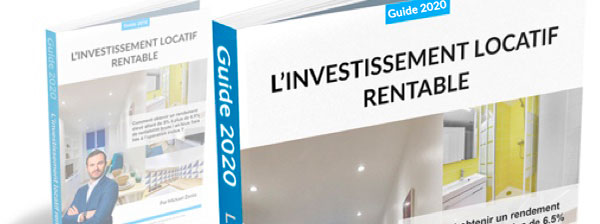Heritage and profitability: the success of purchasing an old building

The purchase of a dilapidated building evokes a context rich in history and financial potential. Old stone and its experience are often the scene of exceptional opportunities. Whether in the city center of Paris with its majestic old buildings or in other regions. Each old building is a potential announcement of the association between heritage and profitability.
The market for old real estate is fertile ground for savvy investors. Each old real estate purchase can become a key piece in building a solid real estate portfolio. Real estate VAT, land deficit and other tax measures can influence the profitability of a rental investment in an old building. However, it is essential to understand the subtleties of the sales agreement, from the signing of the deed of sale to the resistance and rigidity of the work.
We will explore the diversity of the existing property market , highlighting the crucial importance of what results from heritage and profitability. Property listings reveal fascinating projects to buy old mansions, old homes transformed into lucrative investments and much more.
The attractions of old real estate
Old real estate, with its architectural charm and rich history, attracts investors. In particular those who are looking for a fusion between the enhancement of built heritage and aesthetic potential. Each dilapidated building becomes a centerpiece in the preservation of architectural history . This could be a private mansion or an old home. Real estate VAT, the land deficit and other aspects of the dilapidated real estate purchase process add a strategic dimension to this objective.
Location of old buildings
Geographic location, as a key factor, determines the true value of a dilapidated building. From the heart of the city center to emblematic neighborhoods, the location of these historic properties directly influences their attractiveness and value. Exclusive real estate listings reveal rooms and plots with high potential, offering investors the opportunity to create unique projects. Proximity to dynamic areas, connections to public transport and other geographical criteria are all parameters that impact the demand and value of these buildings.
Each old purchase thus becomes a compromise between preserving heritage and optimizing real estate potential. Buildings to be renovated, sometimes requiring complex work, can be the ideal terrain for schemes such as zero-rate loans or land deficits. This reinforces the financial attractiveness of these investments, particularly when considering criteria such as:
- the price,
- surveillance camera for security,
- real estate advertisements highlighting apartments with high potential,
- house renovation plans,
- the involvement of a real estate agency in the process,
- the availability of financing and credits.
In this network of opportunities, there is an exclusivity, highlighted in rental or sale advertisements, whether for an apartment, commercial premises or offices. The decision-making, whether related to the purchase, rental or letting, also involves a careful evaluation of the property, including the energy performance diagnosis, adding essential dimensions to this analysis of the old real estate market.
The financial benefits
Old real estate stands out not only for its historical charm, but also for the financial advantages it offers, making each investment a strategic and heritage act.
Potential for enhancing heritage
The potential for enhancing the value of the heritage is one of the most attractive features of buying a dilapidated building. The appreciation of each apartment over time becomes a real imprint on the urban landscape. It will thus positively influence the entire neighborhood. Each old building, well renovated, contributes to the preservation of the local identity. It also creates a significant financial impact. The exclusive plots of land, often accompanied by emblematic buildings, thus become silent witnesses to the link between history and prosperity.
Tax benefits related to catering
The tax benefits, following a restoration project, add a strategic approach to this investment. Tax exemption schemes offer unique opportunities to optimize financial profitability . This will be the case for the land deficit and the Malraux law. The latter also contribute to the preservation of architectural heritage. The zero-rate loan becomes an ally for those who undertake work in an old building. As a result, it facilitates access to advantageous financing.
Encouraging renovation is part of a sustainable development and urban revitalization perspective. It is therefore not just about tax benefits. Old buildings, sometimes abandoned, then become attractive rental investment projects. At the same time, they can revitalize entire neighborhoods. The signing of the deed of sale subsequently becomes a crucial step for investors aware of the issues. However, it will be necessary to take into account its share of information on the risks to which the building may be subject.
Thus, old real estate is revealed as much more than a simple financial investment. It is a strategic choice that contributes to:
- to the preservation of heritage,
- à la revitalisation des quartiers,
- to the creation of real living spaces steeped in history.
Considering criteria such as the price of the property, the possibility of installing a security camera, real estate listings highlighting a unique apartment, the home renovation plan, the involvement of a real estate agency in the process, as well as the financing and credit options available, this investment is made up of multiple facets.
In this network of opportunities, exclusivity is emerging, highlighted in rental or sale advertisements, whether for commercial premises or offices. The decision to purchase, rent, or lease also requires a careful assessment of the property, including the energy performance diagnosis, adding essential dimensions to this analysis of the old real estate market. These elements contribute to making each real estate transaction an enriching experience, combining financial investment, preservation of heritage, and contribution to the dynamism of neighborhoods.
Challenges and tips for a successful purchase
Buying an old building, although promising, is not without its challenges. To succeed in this project, you must master everything concerning the condition of the building and the administrative implications. It is also essential to know strategic tips.
Condition of the building and renovation costs
The condition of the building and the renovation costs represent the first challenge. Before concluding a sales agreement, a thorough inspection is essential. Savvy investors spend time exploring every corner of the dilapidated building to assess the work needed and estimate the restoration costs. Rooms or land found in exclusive opportunities may be promising, but can reveal surprises. This is why a clear vision of the work to be undertaken is necessary.
Management of administrative constraints
Managing administrative constraints is another complex aspect. Knowledge of the regulations in force, whether it is the energy performance diagnosis or added taxes such as real estate VAT, is imperative. An investment in an old building can be hampered by legal and urban planning constraints. This will require in-depth expertise. This is where professional support comes into play. Hiring real estate experts, specialized lawyers or experienced agents can prove to be a winning strategy. They will be able to help you avoid potential pitfalls.
Beyond the challenges, these steps also pose opportunities. The negotiation of the sales agreement becomes a key act to secure the old purchase. The land deficit, despite its tax implications, offers an opportunity to optimize costs. You will thus have the opportunity to benefit from various financial advantages. The signing of the sales agreement can be controlled with prudence and expertise. You will be sufficiently informed to manage and avoid risks.
Buying an old building is therefore an exciting project but strewn with obstacles. A prudent approach can transform these challenges into opportunities. To do this, it will be necessary to combine it with a thorough knowledge of the potential pitfalls and professional support. In this way, each acquisition can become a heritage and financial success.
Investment Strategies
Acquisition for rental
Investing in a dilapidated property requires strategic thinking , especially when it comes to investment strategies. If you choose to buy to let, you will be tapping into the growing rental demand for these historic properties. Exclusive real estate listings reveal a persistent demand for well-renovated old homes. This illustrates the profitability potential of this strategy. Investors can also maximize the value of their property by opting for quality renovations. They will be able to combine modernity with the preservation of historical charm.
Main residence or rental investment
The decision between making an old building a primary residence or a rental investment depends on the financial objectives of the investor. Choosing to live in an old building, such as a mansion in the heart of Paris for example, can offer a unique living experience while preserving the heritage. However, rental investment has tangible financial advantages. Mechanisms such as the land deficit or the zero-rate loan can influence long-term profitability. This will highlight the importance of a clear vision of financial objectives.
The choice between a primary residence and a rental investment is not limited to personal satisfaction, but extends to long-term financial planning. Exclusive plots of land, purchased with the prospect of a rental investment, can become investment properties generating stable income. The signing of the deed of sale, with its share of information on risks, takes on a strategic dimension, requiring a thorough understanding of the long-term financial implications.
Thus, investment strategies in old real estate offer a range of options, each meeting specific objectives. From the choice between a primary residence and a rental investment to the enhancement of value through quality renovations, each decision shapes the financial and asset success of the investor, adding a unique dimension to each dilapidated building acquired.
Case Studies
Examples of successful investments in old real estate
Case studies in old real estate highlight inspiring examples of successful investments. They reveal the significant evolution of the value of the heritage over time. These stories demonstrate that buying an old building is not simply an act of investment. It is a story in constant evolution .
In the city center of Paris, visionary investors have acquired old buildings. Their goal was to transform these architectural riches into lucrative investments. Exclusive real estate listings reveal pieces of land, which will be purchased as a rental investment or renovation. They will then become investment properties with exceptional profitability. The carefully renovated old mansions and homes illustrate how the fusion of modernity and tradition can not only preserve heritage but also enhance its value.
Evolution of the value of heritage
The evolution of the value of the heritage is palpable in these case studies. Buildings purchased in changing neighborhoods, such as Alt Immeuble Saint , have experienced considerable appreciation over the years. Mechanisms such as the land deficit and the Malraux law have played a crucial role in this valuation, thus reinforcing the attractiveness of these investments. The evolution of the value is not limited to simple financial appreciation, but to the transformation of neighborhoods and the preservation of a living heritage.
These case studies highlight the success of investors who are aware of the issues at stake, skillfully juggling between sales agreements, necessary renovations and risk management . The signing of the deed of sale, with its share of information on risks and the energy performance diagnosis, was a crucial step in each journey. Ultimately, these examples of successful investments in old real estate attest that each old building can become a centerpiece of a heritage and financial success story.
Buying an old building: what you need to know
This analysis concerning the purchase of the old building offers us a rich synthesis of the heritage and financial advantages that result from these unique investments. These dilapidated buildings, much more than a simple acquisition, are architectural treasures capable of merging tradition and profitability.
The heritage benefits are undeniable. Each old building becomes a living witness to history, a tangible contribution to the preservation of architectural heritage. The private mansions and old dwellings, carefully renovated, become legacies passed down from generation to generation. The exclusive plots of land, purchased as part of a rental investment strategy, add a unique dimension to this history, creating lively and dynamic neighborhoods.
On the financial side, the advantages are just as attractive. Tax measures such as the land deficit, the Malraux law and the zero-rate loan prove to be strategic allies for maximizing profitability. Investment properties, for their part, resulting from intelligent renovation, demonstrate the added value that dilapidated real estate can bring to an investment portfolio.
This overview of the heritage and financial benefits aims to enlighten investors on the relevance of considering dilapidated real estate as a preferred investment option . Exclusive real estate listings, sales agreements and risk management become opportunities to create rich and meaningful real estate stories. So, with this synthesis in mind, we launch an enthusiastic call to explore the inexhaustible potential of old real estate, where each building and apartment becomes an open door to a flourishing heritage and sustainable financial opportunities.
These articles may also be of interest to you
-

La Transmission Universelle de Patrimoine (TUP) est une méthode juridique permettant de transférer intégralement les actifs, passifs, droits et obligations d'une entité à une autre en assurant la continuité patrimoniale et en limitant les risques d'erreur.
-

L'immobilier résiste à la crise économique grâce à une demande soutenue, des prix rééquilibrés et des taux d'intérêt stabilisés. En période de crise, les primo-accédants, investisseurs et vendeurs doivent ajuster leurs stratégies pour saisir les opportunités et optimiser leurs projets immobiliers.
-

La gestion comptable d'une SCI familiale peut sembler complexe, mais elle repose sur des principes simples. Ce guide vous aide à comprendre les obligations légales et à simplifier la comptabilité en utilisant des outils adaptés. Vous découvrirez des conseils pratiques pour éviter les erreurs fréquentes et assurer la conformité fiscale de votre SCI.



